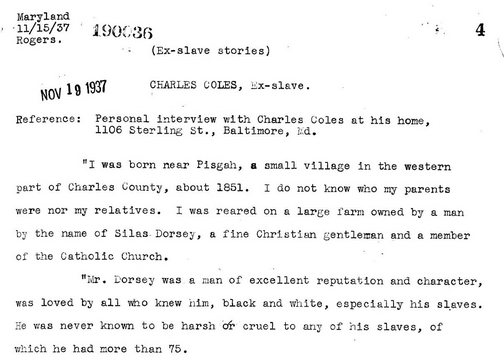This module is for

Image credit: Library of Congress.
Primary sources are original documents that give a firsthand account by someone who lived during the historical period.
Primary Sources
What are primary sources?
Did you know that you interact with primary sources every day? Primary sources are pieces of evidence that provide information about the past — original documents, objects, photographs, and oral histories — that were created during a historical period.
Let’s see what you already know about primary sources.
There are different types of primary sources. When studying the past, it is important to study a variety of sources and examine each one carefully and critically. Explore the slides below to learn about some different types of primary sources.
Now that you have learned about the different types of primary sources, let's continue the investigation and explore why studying them is important.
Why is it important to study primary sources?
Play the following video clip, and learn why educator and historian, Lee Ann Potter from the Library of Congress, thinks it is important for young people to analyze primary sources.
Now, answer the following question to see what you remember.
How do I use primary sources?
You can use primary sources to deepen your understanding of people’s lives and the circumstances under which they lived. Primary sources give clues about the past that can be used to support research, draw conclusions, and increase your knowledge about how the past has shaped the present.
While primary sources provide a ton of information about the past, there are some limitations as well, including bias. Select each title below to read about the benefits and limitations of using primary sources.
How do I analyze primary sources?
There are several ways to analyze primary sources. One popular method is the 3-step process: Observe, Reflect, Question. Explore the following activity to learn how to analyze primary sources using this model.
The 3-step model is a great tool to use as you begin analyzing primary sources. In this activity, you will take the process of analyzing primary sources even further. You will use the Reflection, Inquiry, Self-Awareness, and Empathy (RISE) Empathy Framework and Analysis Tool to discover how your personal beliefs and experiences impact your analysis, and how primary source analysis can inspire you to action.
RISE is an acronym that stands for Reflection, Inquiry, Self-Awareness, and Empathy.
Take a moment to walk through each component of the RISE analysis tool to become familiar with each part. You will learn more about how to apply this tool to primary sources later in the activity.
While we analyze primary sources to get answers to questions, another purpose of analyzing primary sources is to generate questions. This is known as inquiry. Proceed to the next page to learn about the art of inquiry.





